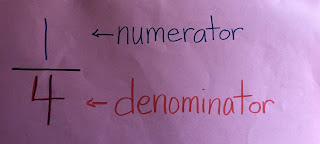Yes, your kids are almost in Grade 4. Seems like the school year just began.
Assessments are over. Doing a quick scan of students' work, I was glad to see lots of correct answers, but I know some questions caused problems. Even some things that we reviewed, and practiced, and reviewed, and I thought students had them down, caused problems on the assessment.
I am hopeful that your child's overall results will be good, but when you receive the results in the fall, please don't panic if there seem to be areas of concern. The kids are still young. Their brains are still developing. Some concepts take time for some of us to fully understand.
I'm not sure, but you may notice a difference between the mark I give your child on the report card and the results of the assessment. Please keep in mind that I see your children every day and I see them showing and applying their math skills and knowledge in different ways in class, both on their own and when in groups. That is what I base my marks and comments on and it is very different way of assessing that the Provincial Assessment approach.
We have about 2 and a half weeks left of classes with a field trip and other activities planned during that time period. The time we spend in math class will be spent practicing multiplication facts, doing some estimating, and general review to keep skills sharp.
I won't be sending home any more homework sheets. Thank you for your support in helping your children with these over the last few months. Please just keep practicing math facts: addition and subtraction to 18 (or 20) and multiplication and division facts to at least 36. They will need to be strong with all of these facts in Grade 4 and beyond.
Have a great week!
Assessments are over. Doing a quick scan of students' work, I was glad to see lots of correct answers, but I know some questions caused problems. Even some things that we reviewed, and practiced, and reviewed, and I thought students had them down, caused problems on the assessment.
I am hopeful that your child's overall results will be good, but when you receive the results in the fall, please don't panic if there seem to be areas of concern. The kids are still young. Their brains are still developing. Some concepts take time for some of us to fully understand.
I'm not sure, but you may notice a difference between the mark I give your child on the report card and the results of the assessment. Please keep in mind that I see your children every day and I see them showing and applying their math skills and knowledge in different ways in class, both on their own and when in groups. That is what I base my marks and comments on and it is very different way of assessing that the Provincial Assessment approach.
We have about 2 and a half weeks left of classes with a field trip and other activities planned during that time period. The time we spend in math class will be spent practicing multiplication facts, doing some estimating, and general review to keep skills sharp.
I won't be sending home any more homework sheets. Thank you for your support in helping your children with these over the last few months. Please just keep practicing math facts: addition and subtraction to 18 (or 20) and multiplication and division facts to at least 36. They will need to be strong with all of these facts in Grade 4 and beyond.
Have a great week!

